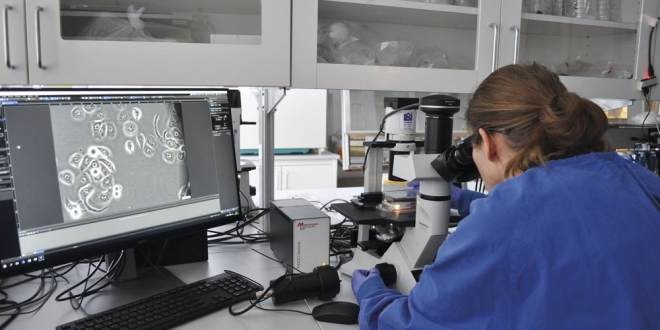Cancer scientist Stina Oredsson is convinced that it is possible to decrease the number of animal tests in today’s research. The knowledge is available, but old habits need to be broken and the will needs to grow stronger.
Written by: Cornelia Smedberg Translated by: Rebecka McKinnon Forsell
At a young age, Stina Oredsson became interested in biology and chose later to study the field at Lund University. During her education, she came in contact with cancer scientists and today she is working with creating new substances that reacts to resistant cancer cells. This is done by culturing cells in bottles containing a nutrient liquid.
Wants a Change
In a lot of today’s research, animal testing is applied and Stina Oredsson wants to change that. Her first research had elements of animal testing, but after that, Oredsson started to use cancer cells in culture as a testing system. The reason was that she had had enough of the animals’ suffering.
“We used small mice with tumors in their abdominal cavity. The mice got fatter and fatter, and we treated them with different anti-cancer toxins with the goal to make them survive. It gave some result but we couldn’t cure them. The mice fell down and died like small fat balls,” says Stina Oredsson.
Sees Other Solutions
Today, you are not allowed to do cancer research without first testing it on animals. Stina Oredsson admits that you can’t always escape using animal testing, but she thinks that many questions on the way can be answered without using animals. Instead of immediately testing a discovered substance, on for example a mouse with a tumor, she thinks you should first try to test the substance on normal cells. In that way, you can find out what reactions the normal cell suffers most from and in that way, relieve the mouse of the most toxic substances.
“We know today how a cancer patient is feeling and it doesn’t feel right to inject these substances into an animal before I know more about how they work,” says Stina Oredsson.
Faces Resistance
Trying to decrease the number of tests on animals isn’t always easy. Animal testing has traditionally always been used and often something called bovine calf serum is added to the solvent where the cells are cultured. The serum is made of blood tapped from calf fetuses and you get it by inserting a needle into the calf’s heart which kills them. This is made when the cow is sent to slaughter.
“I think we should cease this kind of unethical product and use more ethically produced products. But trying to get it to make an impact is difficult,” says Stina Oredsson.
She tried to encourage ceasing the use of calf serum, but it is difficult. There does not seem to be an interest in producing replacement products within the world of science, even though the knowledge is there.
“Unfortunately, you never get the Nobel Prize for research that leads to a decrease in the use of bovine calf serum. It would be amazing if you did,” says Stina Oredsson.






